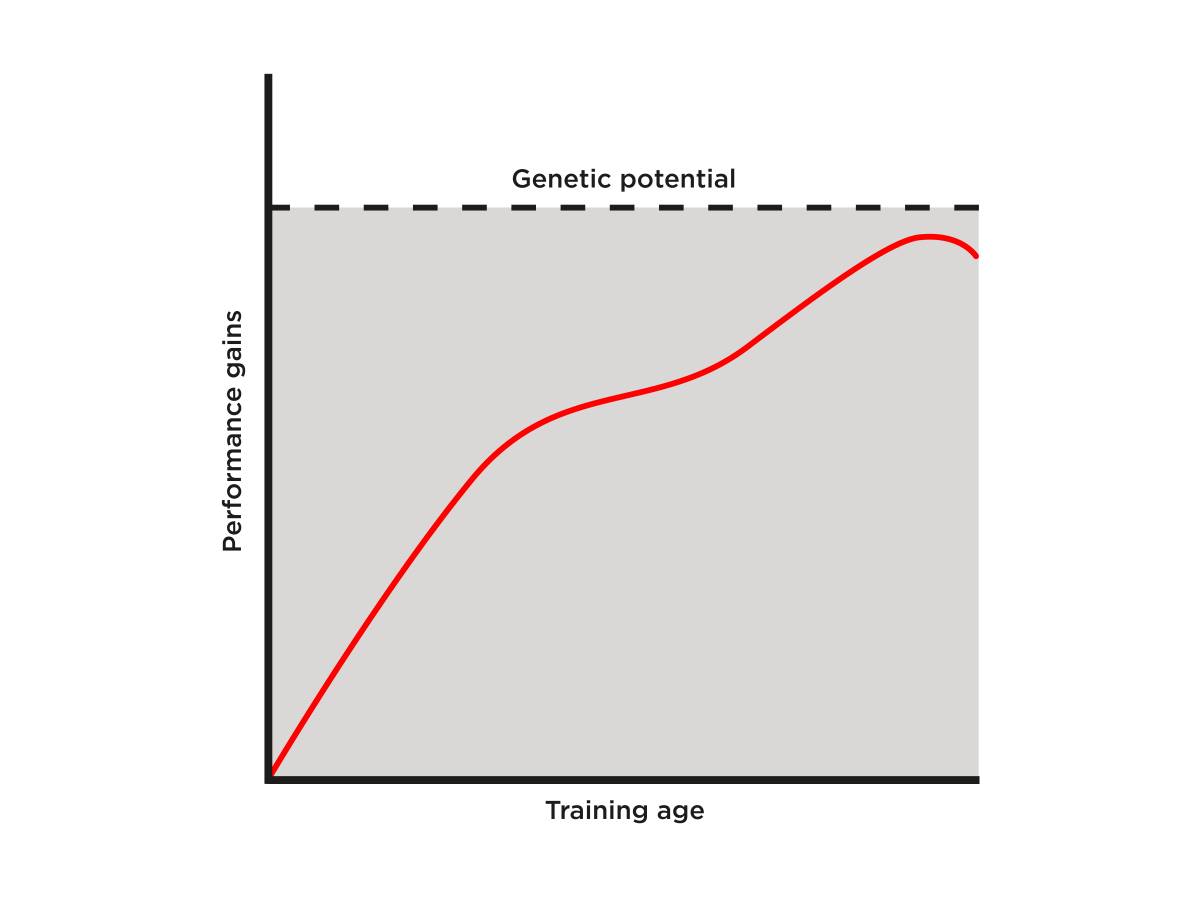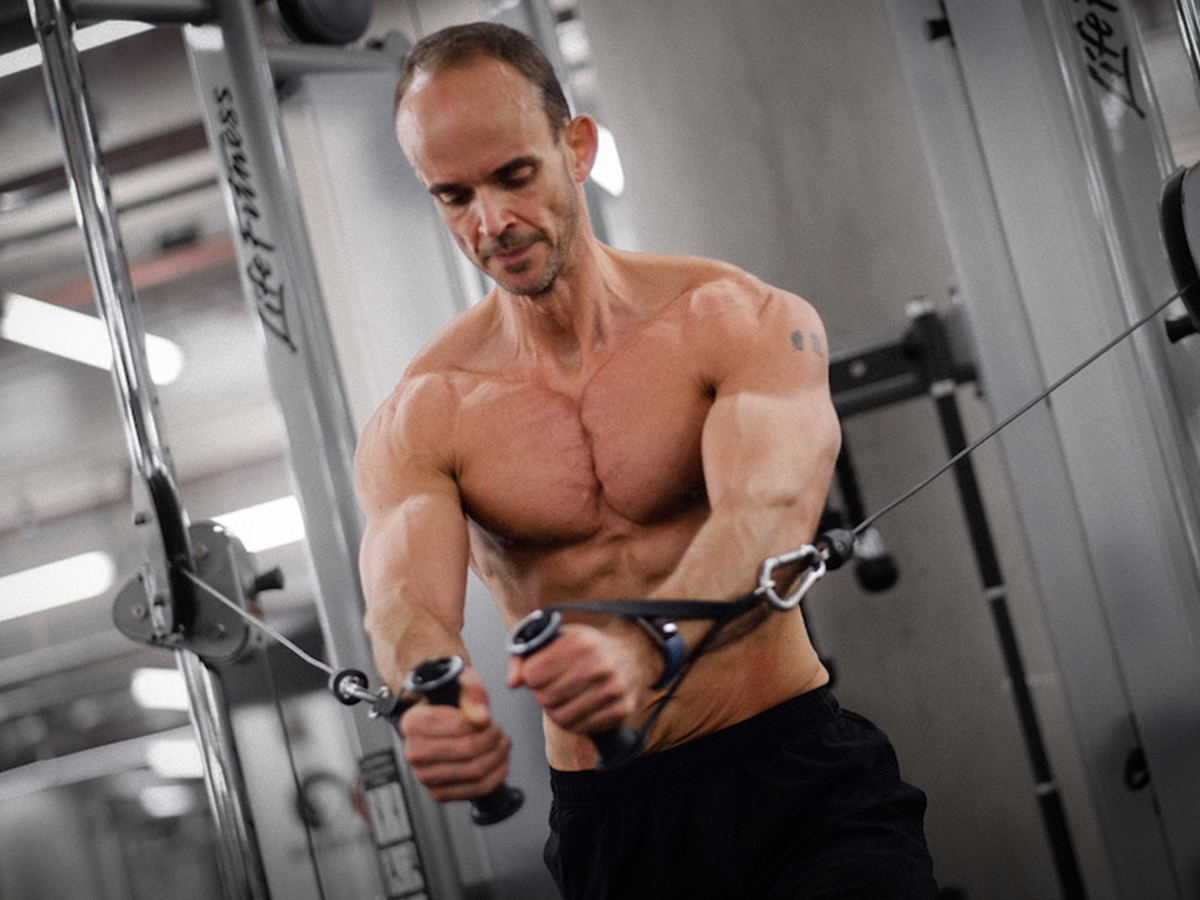Ever heard that skinny guys can’t build muscle?
Have you tried every program, supplement and nutrition plan going but still can’t seem to make progress?
We have achieved thousands of body transformations with so-called ‘hard-gainers’ at Ultimate Performance.
Thi is all the proof you need that anyone can build a cover-model physique with the right combination of expert coaching and dietary and training consistency.
In part three of our Male Myths series, we’re dispelling the hard-gainer myth once and for all, giving you all the tips, tricks and information you need to start seeing real results.
Where did the ‘hard gainer’ myth originate?
In the 1940s, American psychologist William Herbert Sheldon developed the now widely derided concept of ‘somatotypes’ that categorised humans based on their shape and size and correlated with character traits, such as aggression or a propensity for crime[1],[2].
However, despite these ideas being widely refuted in the scientific community, the concept of fixed body types pervaded in fitness circles[3]. Over the years, popular science has drawn on Sheldon’s flawed research, and you’ve likely seen articles claiming to teach you ‘how to train for your body type’.
These three body types are supposedly:
- Ectomoph
- Endomorph
- Mesomorph

However, this presupposes that the world’s seven billion-plus inhabitants fit into three neat categories without considering that two ‘ectomorphs’ could have entirely different anatomical structures. It also presumes that we cannot change our physical appearance. Compare pictures of Arnold Schwarzenegger as an adolescent to his peak bodybuilding years, and it’s clear that significant physique changes are possible.
There’s no denying that some individuals find it easier to gain muscle. For instance, if you are very long-limbed, it may appear as if your muscles are smaller as they cover a larger surface area compared to someone with shorter limbs.
But while you can’t change your unique anatomical structure, improving your physique is certainly possible with smart training and nutrition.
The reasons the hard-gainer myth misses the point
1. Most hard-gainers don’t train hard enough for long enough
One key element that dictates progress is training age, which reflects an individual’s training history and potential for continued improvement. It is the combined workload and skill level developed over weeks, months or years of training. As a newbie, you probably reap around 80% gains for 20% effort. The longer you train, the closer you move towards your ‘genetic potential’, meaning you have to put in more effort to obtain even marginal gains. However, hard-gainers often fail to train consistently with the intensity required to maximise muscle growth beyond this initial burst of progress.

One of the key factors determining growth is training volume. And while you’ll often see a lot of trainees either performing a lot of ‘junk’ 20-plus-rep sets or, inversely, only training their one-rep max, these approaches produce far less superior results than a moderate rep range at relatively heavier loads[4]. Rather, if hypertrophy is the goal, we need to maximise training volume, which we can achieve by working within a rep range of 8-12 with loads that are heavy enough to elicit adaptation[5].
2. Most hard-gainers don’t train movements that suit their anatomy
Are you guilty of hopping between the latest celebrity program or cookie-cutter plan that you bought online? Unfortunately, these approaches often prescribe ‘must-do’ exercises (like the classic squat, bench and deadlift), which may not be optimal for your goal and anatomy. Build a program that’s tailored to you, and you’re likely to see far better results[6].
3. Most hard-gainers overestimate how much they eat
If you don’t give your body the nutrients to grow, your results will always be suboptimal. And as you move closer to your genetic potential, these factors become increasingly important. Nevertheless, many hard gainers overestimate how much they eat compared to their maintenance requirements.

4. Most hard-gainers underestimate how much they move
Hard-gainers often underestimate their energy requirements compared to how much they move. You might feel like you’re frequently eating, but if you’re incredibly active, it may not offset what you burn. ‘Maintenance’ is a moving target and varies according to your activity levels, which means that tracking and adjusting to trends is more valuable than giving a set-in-stone calorie target.
5. Quality is just as important as quantity
Another key piece in the hypertrophy puzzle is protein intake. While protein is vital for muscle protein synthesis, quality is just as important as quantity[7]. So, the low-grade protein you find in your protein bar probably won’t do as much for your physique as a high-quality cut of meat.
And while it’s important to eat enough protein, overdoing it also won’t help your gains. Protein has the highest TEF (thermic effect of food) of all macronutrients, meaning around 20% of its calories are lost through digestion. Extra protein effectively decreases your net calorie intake, taking away calories from performance-boosting carbs and fats.
6. Hard-gainers underestimate the importance of effective recovery
Believe it or not, less time in the gym and more sleep will do wonders for your gains. Research shows that sleep loss impairs our ability to tolerate acute and chronic pain, so, in practice, you’re much less likely to push as hard as you need to as often [8].
In addition to sleep, stress is also a well-known killer of gains through its psychological and physiological effects. Chronic stress results in elevated levels of the hormone cortisol, a catabolic hormone that inhibits muscle protein synthesis[9],[10]. Indeed, high rates of perceived life stress may decrease your ability to adapt to resistance training[11]. So, if you’re serious about building a cover-module physique, effective stress management must be a priority.

Hard-gainer Ethan built serious muscle at Ultimate Performance being consistent with his strength training and nutrition.
Solutions for the typical hard-gainer
1. Tailor your program to your goal
Build a program that works to your strengths and allows you to generate as much force as possible from the target muscle groups. If hypertrophy is your goal, these three factors should be a priority when it comes to exercise selection:
a) The skill requirement.
Have you acquired sufficient ‘experience’ in an exercise to lift with enough intensity to grow? A conventional deadlift might be too advanced right now, but could you use a trap bar or lift from blocks? Or could you choose an alternative that targets the same muscle groups but has a more suitable skill level, like an incline hip extension?
b) The degree of stability.
Can you focus solely on the movement, or does it require a lot of stabilisation? For example, the bent-over row is a bodybuilding staple, but it requires a large degree of stabilisation and strength to maintain your centre of gravity. As a result, you either have to use a much lighter load or ‘cheat’ the movement with the rest of your body. Either way, your upper back musculature does a lot less work. But a simple switch to a seated row provides stability that allows you to maximise the output of the upper back and, therefore, growth.
c) Suitability to your anatomy and goal.
Some exercises won’t be optimal for every individual if hypertrophy is the goal. If, for instance, you cannot squat past parallel, you may be better off including a split squat, leg press, or hack squat that allows you to work through a bigger range of motion with more load.

2. Train with the right intensity, consistently
Once you’ve got a solid plan, use the ‘reps in reserve’ system to gauge intensity. While this method isn’t fool-proof, it allows you to assess loads more accurately at higher loads[12]. As a general rule, aim for 1-2 reps shy of true failure in your initial sets and all out on your final set. Work within an 8-12 rep range, consistently increase the loads over time (without sacrificing technique), and you will grow.
3. Track food intake alongside body weight
What you measure, you can manage. By tracking daily weight and food intake, you can look at trends to assess whether you are progressing. Assuming you are not eating in a deficit, it may be wise to cap your protein intake at 1.8-2.2 g/kg lean body mass. This may sound low, but it allows you to allocate more calories to carbohydrates and fats, which tend to be more beneficial for muscle growth[13].
Once you have a benchmark, you can adjust calories based on progress. Be mindful not to fall into the trap of thinking that you need an excessive surplus to grow; eating around or just above maintenance is more than enough to elicit hypertrophy[14]. A general target for muscle gain is 0.25-0.5% total body weight increase per month.
4. Prioritise recovery
You grow outside the gym and, often, less is more. Training each body part two to three times per week balances optimal recovery while ensuring you can maximise training volume[15]. Additionally, two free ways to boost muscle growth are ensuring you sleep for at least 7-9 hours and performing active recovery through low-impact activity, such as walking.

To sum it up…
Lifestyle, genetics and training experience are factors that all have a tangible effect on your ability to gain muscle. However, the hard-gainer myth doesn’t consider that training methodology, energy balance and effective recovery are vital pieces of the puzzle. But, if you nail the basics consistently enough, for long enough, even the ‘skinniest’ guy can build muscle.
Key Points
- The concept of the hard-gainer originates from old-fashioned concepts of body types.
- Anatomical structure, training methodology, nutrition, and effective recovery play a far greater role in muscle growth than body type.
- Focus on generating high-quality training volume with exercises that suit your training ability and anatomy.
- Critically assess how much you eat and whether this matches your daily energy needs.
- Remember that you grow outside the gym, so sleep, and effective recovery are far more important than factors like meal timing or supplements.



